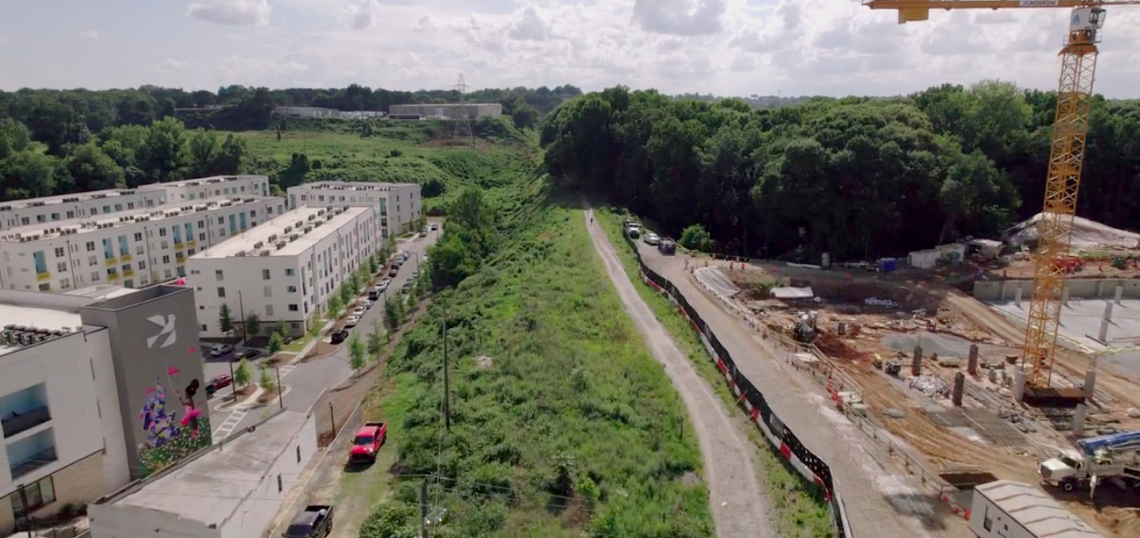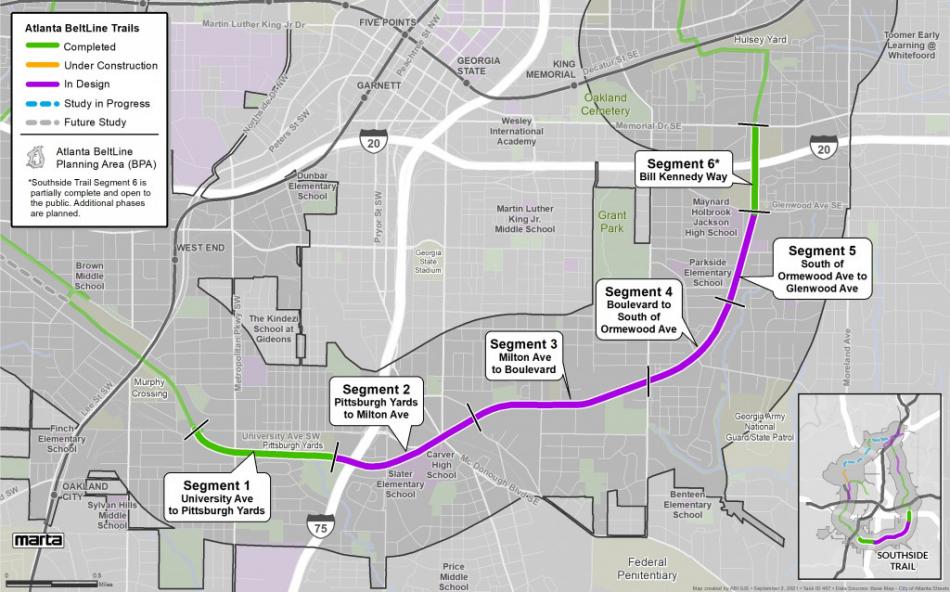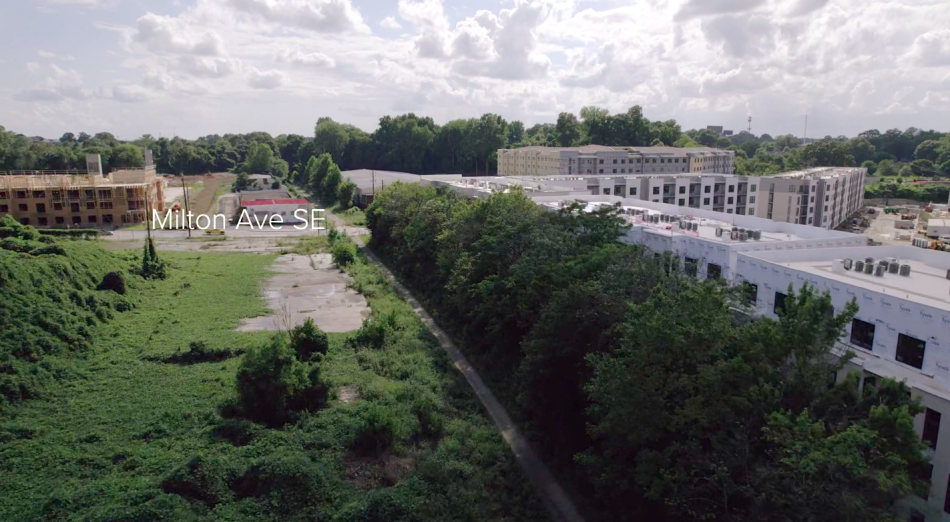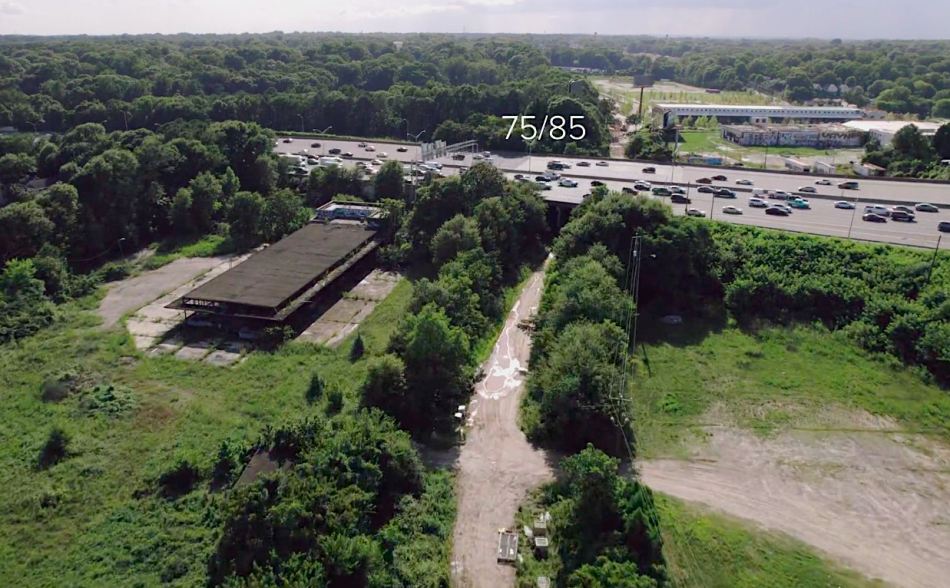The City of Atlanta and its most impactful urban reclamation project, the Atlanta BeltLine, have been awarded $16.5 million in federal funding that officials say will go a long way in helping stitch the city back together.
The U.S. Department of Transportation has awarded the RAISE Grant money to support construction of nearly two miles of the Southside Trail that will stretch from Pittsburgh to the doorsteps of Grant Park and Chosewood Park, as Atlanta BeltLine Inc. leaders announced Wednesday evening.
Two years ago, under a different presidential administration, BeltLine officials also vied for $16 million to build trails in the same corridor as part of a program called Better Utilizing Investments to Leverage Development, or BUILD. That funding was denied.
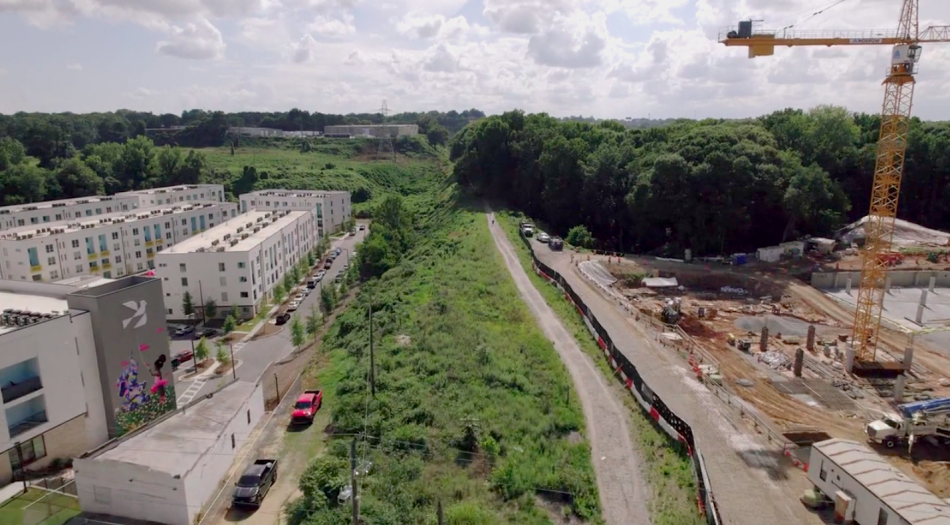 The Southside Trail corridor over Boulevard, as seen last summer. Drone footage via Atlanta BeltLine Inc.
The Southside Trail corridor over Boulevard, as seen last summer. Drone footage via Atlanta BeltLine Inc.
USDOT’s decision this week was applauded by Georgia's freshman Democratic U.S. Sens. Raphael Warnock and John Ossoff.
“When we connect our communities with pedestrian and bike trails, we provide a pathway for residents to enjoy local greenspaces and invest in small businesses,” said Warnock in a statement. “This $16 million investment in the BeltLine,” added Ossoff, “is going to substantially accelerate the project and will help communities all around metro Atlanta.”
The Southside Trail pieces in question—Segments 2 and 3—span 1.9 miles from the jobs-focused Pittsburgh Yards redevelopment around to Boulevard, just south of Zoo Atlanta.
The BeltLine pegs the total cost of building that section at roughly $40 million. The RAISE Grant will be combined with $4 million in federal funding the agency received in May, by way of the Atlanta Regional Commission.
Funding from the BeltLine’s Special Service District tax passed earlier this year, along with the project’s longstanding Tax Allocation District, will also be used.
Earlier this year, USDOT officials announced the RAISE program—Rebuilding American Infrastructure with Sustainability and Equity—would distribute $1 billion to projects nationwide.
For capital projects like the BeltLine in urban areas, the awards were capped at $25 million. Minimum amounts distributed are $5 million.
![]() Near the Beacon and next-door condo development in Grant Park, with Chosewood Park at left. Atlanta BeltLine Inc.
Near the Beacon and next-door condo development in Grant Park, with Chosewood Park at left. Atlanta BeltLine Inc.
The two Southside Trail segments in question will be the last built. They’re in design phases now, but the process of utility relocation, brownfield remediation, and securing permits is expected to take two years before construction can begin, BeltLine heads said this week.
Segments 2 and 3 will include lighting and security cameras, like all new BeltLine sections, along with six ADA access points and two beefed-up, at-grade crossings.
Finishing those segments, as BeltLine officials noted, will help reconnect communities split by the downtown Connect and provide a safer passage under busy intersections and active freight rail lines.
The corridor is considered a future route for Atlanta Public Schools students, and studies have found that eight of nine census tracts around Segments 2 and 3 are classified by the USDOT as Areas of Persistent Poverty that could benefit from enhanced connections to jobs.
The other unbuilt Southside Trail segments, 4 and 5, are scheduled to be under construction in fall 2022. Once built, those will link the existing Eastside Trail down to Boulevard.
Once the Southside Trail is paved and open, patrons will be able to travel 10 miles of contiguous, J-shaped BeltLine from Washington Park, directly west of downtown, around to Piedmont Park in Midtown. Other pieces to extend the trails northward from there are also in planning phases.
“This project is much more than public infrastructure,” BeltLine president and CEO Clyde Higgs said in the funding announcement. “The BeltLine is improving connections to jobs, schools, and opportunities, enhancing equity and mobility, and fostering culture.”
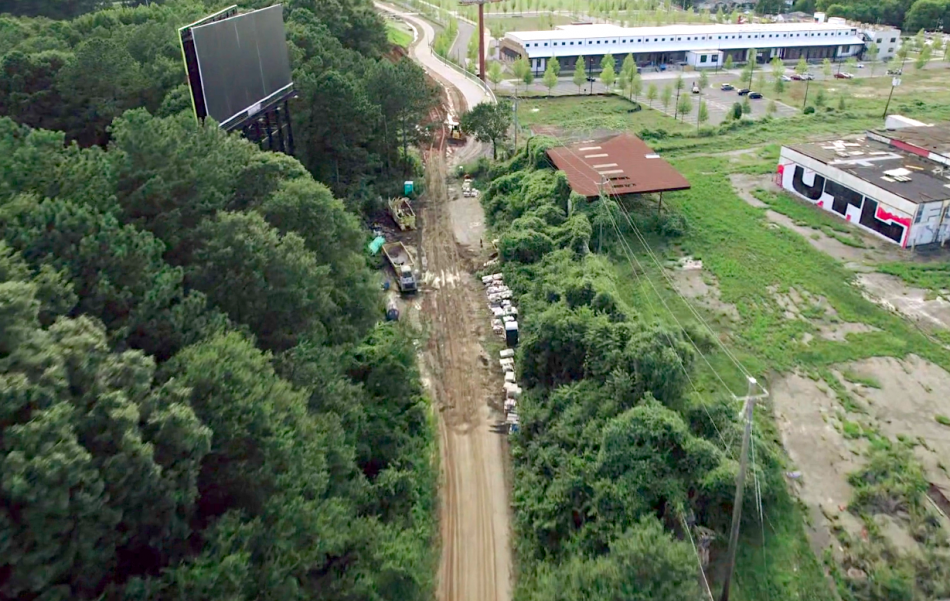 Where the Southside Trail's Segment 2 will link with the recently paved segment at Pittsburgh Yards in Southwest Atlanta. Atlanta BeltLine Inc.
Where the Southside Trail's Segment 2 will link with the recently paved segment at Pittsburgh Yards in Southwest Atlanta. Atlanta BeltLine Inc.
• Images: New link between Atlanta BeltLine, Midtown begins construction (Urbanize Atlanta)




